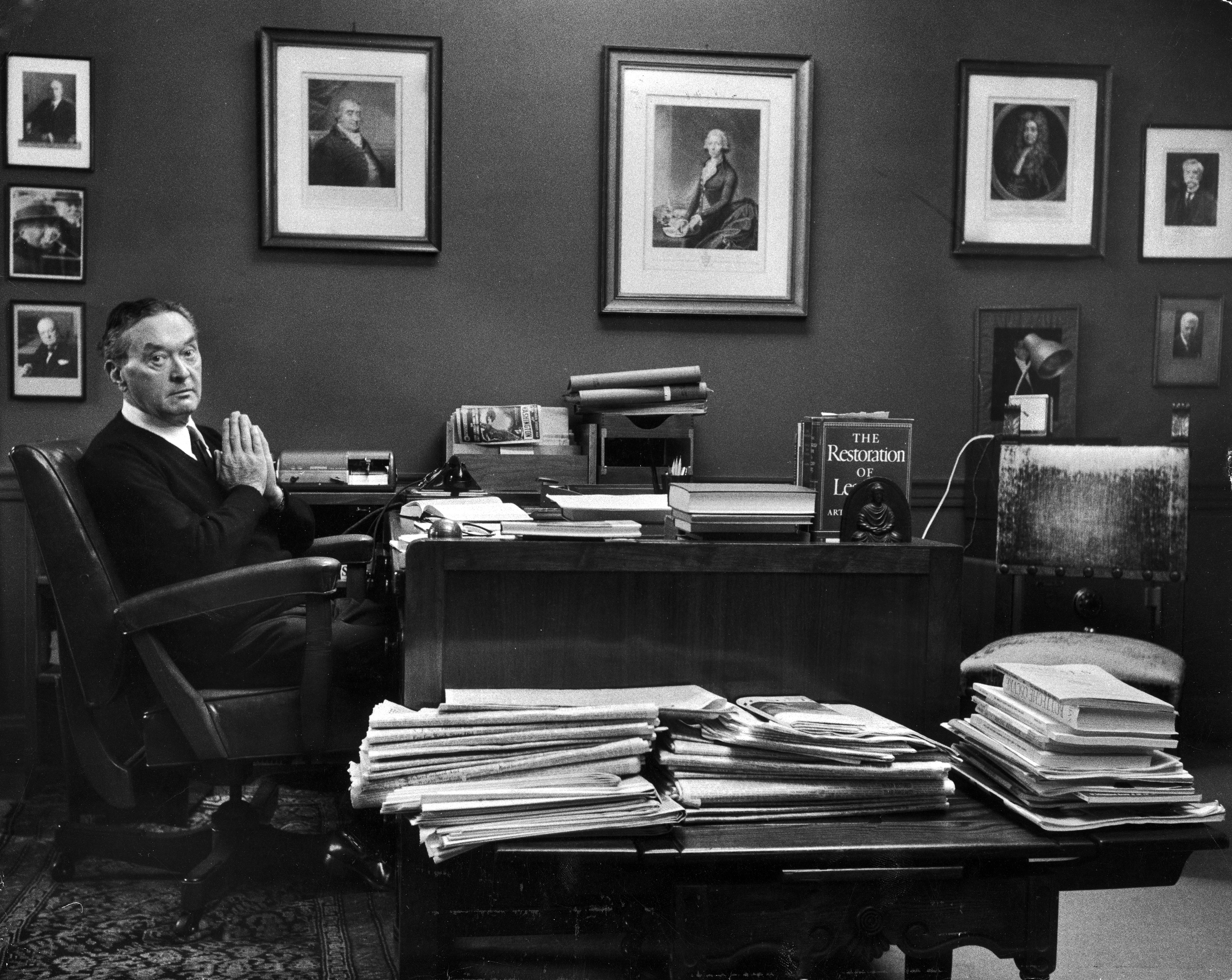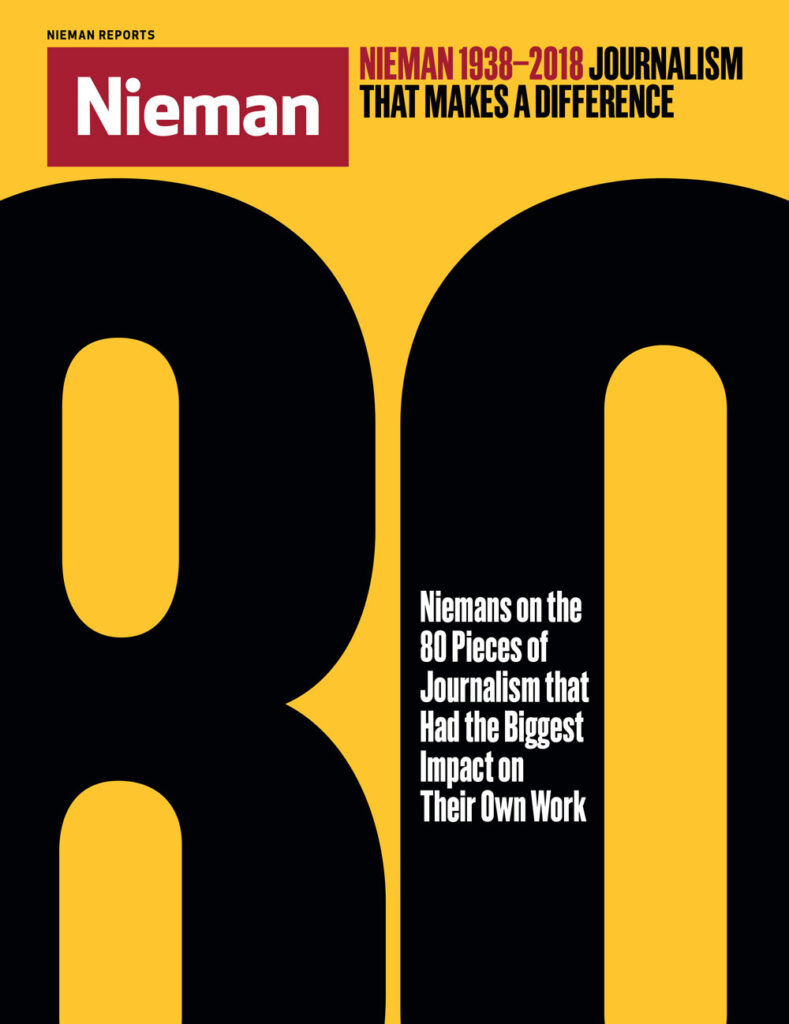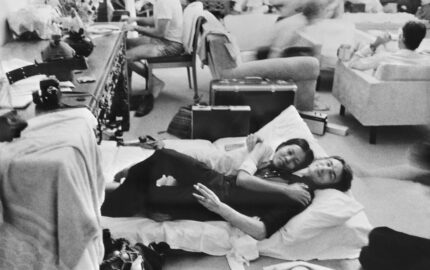“Inconsequential days in London, including talks with people,” wrote Walter Lippmann in his diary entry for July 22-26, 1914. A graduate of Harvard, 24-year-old Lippmann had arrived in Britain a few days before for a European tour. Neither his readings nor his conversations with friends and intellectuals gave him any clue about what was about to happen.
Austria had just delivered an ultimatum to the Serbian government after the assassination of Archduke Franz Ferdinand. The world was on the verge of war.
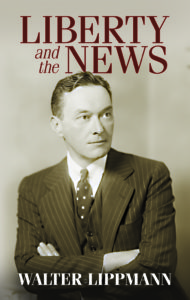
The events didn’t keep Lippmann from traveling to Brussels, where he was astonished by the chaos he saw. “Run on banks. Collapse of credit. Bought ticket for Zurich and then found that the trains ran only to Luxembourg, so I turned back to England, travelling wretchedly all night,” he wrote on July 30. Still confused, a couple of days later, he wrote: “News this morning that Germany has declared war against Russia. I feel a sort of black stupidity with inability to realize the situation.”
Lippmann’s experience of the start of World War I was the beginning of a new focus on foreign affairs that would transform him into one of the world’s most influential columnists. It was also a prologue to a fertile period of his career. Lippmann’s books during these years—“Liberty and the News” (1920), “Public Opinion” (1922), and “The Phantom Public” (1925)—provide valuable insights into some of the challenges journalists still face today, from the impact of disinformation to the shrinking trust of the public to the challenge of covering authoritarian and demagogic political leaders.
Dealing with Disinformation
“Liberty and the News,” which includes essays Lippmann wrote for The Atlantic Monthly, reads like a program to elevate the craft of journalism. Lippmann thought the main danger to journalism came not from the pressures of governments or advertisers, but from the opinionated attitude of many reporters and their lack of professionalism when reporting the news.
Related Reading
“Harvard Helped Form Lippmann’s Mind”
By Ronald Steel
“Re-examining Lippmann’s Legacy”
By Michael Petrou
Much like our own era, the world in which Lippmann published “Liberty and the News” was riven by inequality and transformed by technologies that provoked fear and distrust. Politics was shaken by populists like Robert La Follette and William Jennings Bryan, who railed against trusts and plutocrats and praised the common man. Religious hatred and fear of bolshevism led Congress to approve the Immigration Act of 1924, aimed at restricting arrivals of Roman Catholics, Arabs, and Jews.
“The present crisis of Western democracy is a crisis of journalism,” wrote Lippmann in the first pages of “Liberty and the News.”
Neither journalism nor liberal democracy could survive if the other perished, Lippmann believed, and both were affected by psychological biases and shared the same crisis of trust. What Lippmann saw during the war would shape his ideas on the public sphere for the rest of his life—how governments manufacture the consent of their citizens by exploiting prejudices and dehumanizing perceived enemies.
“I am convinced that we shall accomplish more by fighting for truth than by fighting for our theories. … For the real enemy is ignorance, which all of us, conservative, liberal, and revolutionary, suffer.”
—“Liberty and the News”
“We are told about the world before we see it,” Lippmann wrote in “Public Opinion.” “We imagine most things before we experience them. And those preconceptions, unless education has made us acutely aware, govern deeply the whole process of perception.”
The influence of “Public Opinion” can be found in Harvard Law professor Cass Sunstein’s description of the echo chambers that amplify prejudices in social media and in New York University professor Jonathan Haidt’s claim that “when it comes to moral judgments, we think we are scientists discovering truth, but actually we are lawyers arguing for positions we arrived at by other means.”
Problems of Anonymous Sourcing
After returning to New York, Lippmann decided to apply the lessons he learned during the war in Europe to study the coverage of another major event. In August 1920, The New Republic, which Lippmann co-founded, published “A Test of the News,” a 42-page article he co-wrote with Charles Merz. The piece examined how The New York Times had failed its readers while covering the Russian Revolution and the Russian Civil War. The newspaper had published falsehoods and mixed lazy reporting with its own editorial views. The authors wrote against the “boundless credulity” of reporters and their “untiring readiness to be gulled.”
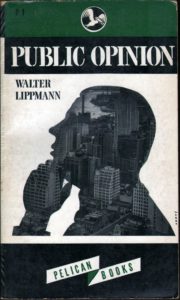
From November 1917 to November 1919, the newspaper published 91 times that the Bolshevik regime was on the verge of collapse—without offering any solid evidence to support that claim. “The chief censor and the chief propagandist were hope and fear in the minds of reporters and editors,” wrote Lippmann and Merz. “The news about Russia is a case of seeing not what was, but what men wished to see.”
The authors detected another element behind the reporters’ poor judgment: accounts from anonymous sources. “Behind those phrases may be anybody, a minor bureaucrat, a dinner table conversation, hotel lobby gossip, a chance acquaintance, a paid agent,” they wrote.
Journalists and media critics still debate the pros and cons of anonymous sources. The controversy is especially acute in the context of covering the Trump administration, when so many scoops depend on unnamed public officials or others privy to private conversations. Many of these stories could not be reported at all without anonymous sources, but over-reliance on anonymity can also undermine reader trust, especially when politics—and media consumption—are already so polarized.
Reporting versus Opinion
Another issue identified by Lippmann and Merz is still very much in play: mixing news with views. Lippmann described access to objective information as “the touchstone of our sanity” and explained why protecting that access was much more important than protecting free speech. For him, objectivity was not an aim but a method. “In going behind opinion to the information which it exploits,” Lippmann wrote in “Liberty and the News,” “we shall be fighting the battle where it is really being fought. We shall be protecting for the public interest that which all the special interests in the world are most anxious to corrupt.”
For Lippmann, reporting was an essential tool to navigate a reality that was too complex for any individual to process. “The private citizen today has come to feel rather like a deaf spectator in the back row… He lives in a world which he cannot see, does not understand and is unable to direct,” he wrote in “The Phantom Public.”
Lippmann pushed journalists to leave behind the sloppiness and partisanship of 19th-century newspapers. Fed up with seeing journalism as “the refuge of the vaguely talented,” he yearned for reporters fluent in the new language of quantitative research and consulting independent experts.
“The private citizen today has come to feel rather like a deaf spectator in the back row … He lives in a world which he cannot see, does not understand, and is unable to direct.”
—“The Phantom Public”
Lippmann’s emphasis on the scientific method reflected the early years of the 20th century. The federal government was creating agencies devoted to quantitative research. Robert S. Brookings founded the Brookings Institution in 1916 with the mission of becoming “the first private organization devoted to analyzing public policy issues at the national level.” In 1921, a group of diplomats and scholars founded the Council on Foreign Relations; Lippmann was a member until the end of his life.
Lippmann was obsessed with improving the quality of reporting, which he saw as essential to preserving a functioning democracy. Lippmann and others led the effort to improve the quality of the news by hiring more educated reporters and getting rid of those who had the usefulness “of an astrologer or an alchemist.” “No amount of money or effort spent in fitting the right men for this work could possibly be wasted, for the health of society depends upon the quality of the information it receives,” he wrote in “Liberty and the News.” Those words anticipated the origin of many journalism schools around the country as well as the creation of the Nieman Foundation in 1938.
Facts and Free Speech
The most prescient passages of Lippmann’s early books are perhaps the ones describing the rise of demagogues and that phenomenon’s relation to the corruption of the news ecosystem.
“Men who have lost their grip upon the relevant facts of their environment are the inevitable victims of agitation and propaganda,” he wrote in “Liberty and the News.” “The quack, the charlatan, the jingo, and the terrorist can flourish only where the audience is deprived of independent access to information. But where all the news comes at second-hand, where all the testimony is uncertain, men cease to respond to truths, and respond simply to opinions.”
In a world besieged by the rise of totalitarianism, Lippmann understood the risk of citizens not being able to tell the difference between facts and lies. “If I asserted that the Japanese secretly drank the blood of children ... I guarantee that most of the newspapers would print it eagerly,” wrote Lippmann in “Liberty and the News.” “The whole reference of thought comes to be what somebody asserts, not what actually is.”
This is, in fact, one of the lessons of the August 2017 study “Partisanship, Propaganda, and Disinformation: Online Media and the 2016 U.S. Presidential Election,” a joint effort of the Berkman Klein Center at Harvard University and the MIT Center for Civic Media. Its co-authors, including Harvard Law professor Yochai Benkler, studied hyperlinking and social media sharing patterns as well as topic and language patterns in more than 2 million stories published by 70,000 sources over the course of the election.
Their analysis showed that Breitbart News’s aggressive coverage set the agenda not only for conservative media but also for mainstream publications like The Wall Street Journal and The New York Times. It also revealed that most of the mainstream coverage was negative for both candidates but largely followed the Trump agenda. The coverage of Hillary Clinton’s campaign, for example, focused mostly on the investigation about her emails, while the coverage of Trump focused mostly on the narratives he pushed. “Coverage of Trump included some scandal, but the most prevalent topic of Trump-focused stories was his main substantive agenda item—immigration—and his arguments about jobs and trade also received more attention than his scandals,” wrote Benkler and colleagues in the Columbia Journalism Review.
For Lippmann, protecting free speech was less fundamental than protecting news gathering and ensuring that people got access to credible reporting. “True opinions can prevail only if the facts to which they refer are known; if they are not known, false ideas are just as effective as true ones, if not a little more effective,” he wrote in “Liberty and the News.” “We cannot fight the untruth which envelops us by parading our opinions. We can do it only by reporting the facts, and we do not deserve to win if the facts are against us.”
This commitment to facts shouldn’t be confused with the “view from nowhere.” A guide published by the American Press Institute (API) explains the origins of the concept of objectivity and includes a few words from Lippmann on the topic: Journalism should aspire to “a common intellectual method and a common area of valid fact ... It does not matter that the news is not susceptible to mathematical statement. In fact, just because news is complex and slippery, good reporting requires the exercise of the highest scientific virtues.”
It is the journalistic method that is objective, not the journalist. Objectivity doesn’t come from the “view from nowhere” but from the discipline of the craft. “Journalists who select sources to express what is really their own point of view, and then use the neutral voice to make it seem objective, are engaged in a form of deception,” says the API’s guide.
Lippmann also pushed reporters to explain publicly how they did their jobs. “The philosophy of the work itself needs to be discussed; the news about the news needs to be told,” he wrote in “Liberty and the News.”
“We are told about the world before we see it. We imagine most things before we experience them. And those preconceptions, unless education has made us acutely aware, govern deeply the whole process of perception.”
—“Public Opinion”
Media organizations are increasingly using just this kind of transparency in an attempt to regain trust, as David Fahrenthold did in his crowdsourced, Pulitzer-winning investigation of the Trump Foundation. When the conservative nonprofit Project Veritas set up an operation to trick Washington Post reporters into publishing a false story about U.S. Senate candidate Roy Moore, the Post published a story and a 10-minute video about how it uncovered the sting. The video included an interview with the woman who tried to mislead them, and the paper explained why it broke the agreement of confidentiality. The Post also explained in a video that is part of a new series called “How to Be a Journalist” how it broke the story about Moore’s legitimate accusers.
Transparency is crucial, Lippmann believed, because “in some form or other the next generation will attempt to bring the publishing business under greater social control. There is everywhere an increasingly angry disillusionment about the press, a growing sense of being baffled and misled; and wise publishers will not pooh-pooh these omens.”
Governments are starting to respond to the threat of disinformation, sometimes with draconian legislation that could threaten real journalism, too. In April, the Malaysian Parliament passed a law that includes punishments of six years in prison and a $127,000 fine for anyone who “maliciously” spreads false information about the country or its citizens. Spain, France, and the United Kingdom are considering milder measures against misinformation.
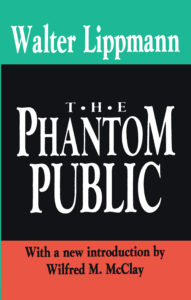
This approach was criticized in a report published in March by a group of experts convened by the European Commission. “There is a long tradition of opposition to government regulation of free press,” the report states. “We would have similar concerns about governments gaining excessive control over what news sources can and cannot be accessed online.” Lippmann also feared government regulation: “If publishers and authors themselves do not face the facts and attempt to deal with them, someday Congress, in a fit of temper, egged on by an outraged public opinion, will operate on the press with an ax.”
Lippmann’s career did not always reflect the ideas he articulated in his early writings. But what he wrote during the early 1920s should still be an inspiration for every journalist who tries to make the invisible visible.
Truth is rarely self-evident. Reality is always more nuanced than it looks at first sight. That is one of the lessons of the scoops on sexual harassment and sexual assault (published by Jodi Kantor, Megan Twohey, Ronan Farrow, and others), which this year won the Pulitzer Prize for Public Service. Reporting that kind of story is expensive and painstaking, but doing it right is a powerful way to effect change.
“I am convinced that we shall accomplish more by fighting for truth than by fighting for our theories,” Lippmann writes at the end of “Liberty and the News.” “It is a better loyalty. It is a humbler one, but it is also more irresistible. Above all it is educative. For the real enemy is ignorance, which all of us, conservative, liberal, and revolutionary, suffer.”
Book cover images: “Liberty and the News” © 1920 by Walter Lippmann. Book cover reproduced with permission of Dover Publications; “Public Opinion” © Front cover in its entirety from PUBLIC OPINION by Walter Lippmann (Penguin Books, 1946) . Copyright © Penguin Books, 1946; Copyright © From “The Phantom Public” by Walter Lippmann. Reproduced by permission of Taylor and Francis Group, LLC, a division of Informa PLC
